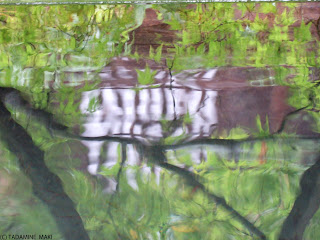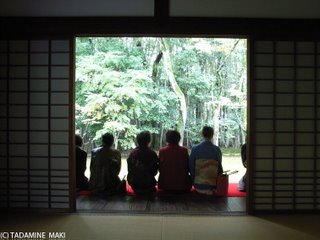
This is a little entrance for a little teahouse. The entrance is about 80 centimeters square.
Why is it so small??
There are mainly two reasons.
First, the small entrance is to put the differences of the class aside. Samurais, high-ranking social class of warriors, used to exist in those days. (In Japan, the class society used to exist in those days. The members were samurais, traders, craftworkers and peasants. Samurais were superior to the others. Now the class no longer exist.) They always carried a sword, katana, with them. The sword is the symbol of samurais, or their class. Samurais without the sword meant that they were equal to the other classes.
Samurais needed to put the sword aside to pass through the small door. This meant that all the classes were equal in the teahouse and that the social class had nothing to do with a tea ceremony. This is one of the most important spirits of tea ceremony.
Second, the entrance were made small to suit the smallness of a teahouse. The small entrance make the small house feel natural. If the entrance is normal size, people will feel the house too small.
That's why the entrance is very small.
By the way, I personally like the light from the entrance into the inside.
Reference:
http://artofjpn2.blogspot.com/2006/10/tea-house-in-kyoto-taian-tea-house.htmlLocation by Google Map
































